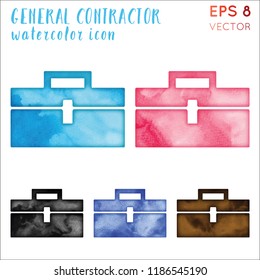A Comparative Analysis Of Exterior And Interior Paint: Essential Differences And Applications
A Comparative Analysis Of Exterior And Interior Paint: Essential Differences And Applications
Blog Article
Post By-Fisker copyright
When you're choosing in between exterior and interior paint, it's vital to understand their basic differences that impact both efficiency and visual appeals. Interior paints are crafted for lower VOC levels and smoother finishes, making them suitable for interior areas, while exterior paints are made to endure rough weather conditions and UV direct exposure. Each type offers a distinct purpose, yet understanding when to make use of one over the various other can considerably influence your project's result. So, what factors should you take into consideration when making your option?
Make-up and Formulation
When selecting between interior and exterior paint, recognizing their structure and solution is important. Inside paints generally consist of a reduced amount of volatile natural substances (VOCs), making them safer for indoor air top quality. You'll notice they often have a smoother finish, which boosts their capability to withstand discolorations and enables easier cleansing. They're developed to endure the roughness of indoor settings, including differing moisture degrees and temperature fluctuations.
On the other hand, exterior paints are created to sustain harsher problems. They normally have higher levels of pigments and ingredients to resist fading from UV rays, along with to prevent mildew and mold and mildew growth. Their structure includes extra binders and materials, which supply far better bond to surface areas subjected to the aspects. This ensures the paint can hold up against rainfall, snow, and fluctuating temperature levels without peeling off or splitting.
Efficiency and Durability
Assessing efficiency and durability is important when choosing in between interior and exterior paint. Inside paint is designed for surfaces that experience much less damage. It generally withstands fading and scuffing, making it suitable for living rooms and bed rooms. However, it might not stand up well in high-moisture areas like bathroom and kitchens without appropriate solution.
On https://realestate.usnews.com/real-estate/articles/how-to-paint-a-bedroom , exterior paint faces harsher problems. https://indoor-painters-near-me56655.blogtov.com/11862698/the-job-of-browsing-with-business-painting-service-providers-can-be-discouraging-uncover-the-crucial-facets-that-can-either-improve-or-hinder-your-project to hold up against UV rays, rain, and temperature changes. This kind of paint frequently has ingredients that stop mold and mildew development, making sure long life in various climates. When you make use of external paint, you can anticipate it to last a number of years longer than indoor paint, supplied it's applied properly.
An additional essential difference hinges on the surface options. Interior paints often have a selection of coatings for visual charm, while exterior paints focus on longevity over shine. If you're trying to find something that can deal with the elements, outside paint is your best bet.
On the other hand, if you're focused on indoor visual appeals with less worry for extreme conditions, interior paint might be suitable. Ultimately, your choice needs to straighten with the particular demands of the setting.
Aesthetic Factors to consider
A fresh coat of paint can change a room, however visual considerations play an important role in your option in between exterior and interior alternatives. When you're choosing paint, think about the mood you wish to create. Interior paint allows you to discover a larger variety of colors and surfaces, enabling you to share your personal design and improve your home's ambiance. Whether you select soft pastels or vibrant colors, the right indoor paint can make your areas feel comfortable, vibrant, or tranquil.
On the other hand, outside paint requires to line up with your home's style and the surrounding environment. Below, you're not simply making a design statement; you're additionally considering aesthetic allure. Picking colors that harmonize with your area can improve your home's value and visual appeal. Bear in mind that outside paint is additionally based on fading and climate changes, so picking an ageless shade can conserve you from frequent repainting.
Ultimately, consider exactly how each alternative fits your vision. By straightening your paint selection with your wanted aesthetic, you can develop areas that show your character while keeping performance.
Conclusion
When it concerns choosing paint, understanding the crucial differences in between interior and exterior options is essential. Interior paints concentrate on appearances and low VOCs, making them perfect for boosting your interior spaces. On the other hand, outside paints are designed for longevity and weather condition resistance, safeguarding your home from the elements. By considering your certain needs and the setting, you can confidently pick the appropriate paint to attain the appearance and durability you prefer for your space.
